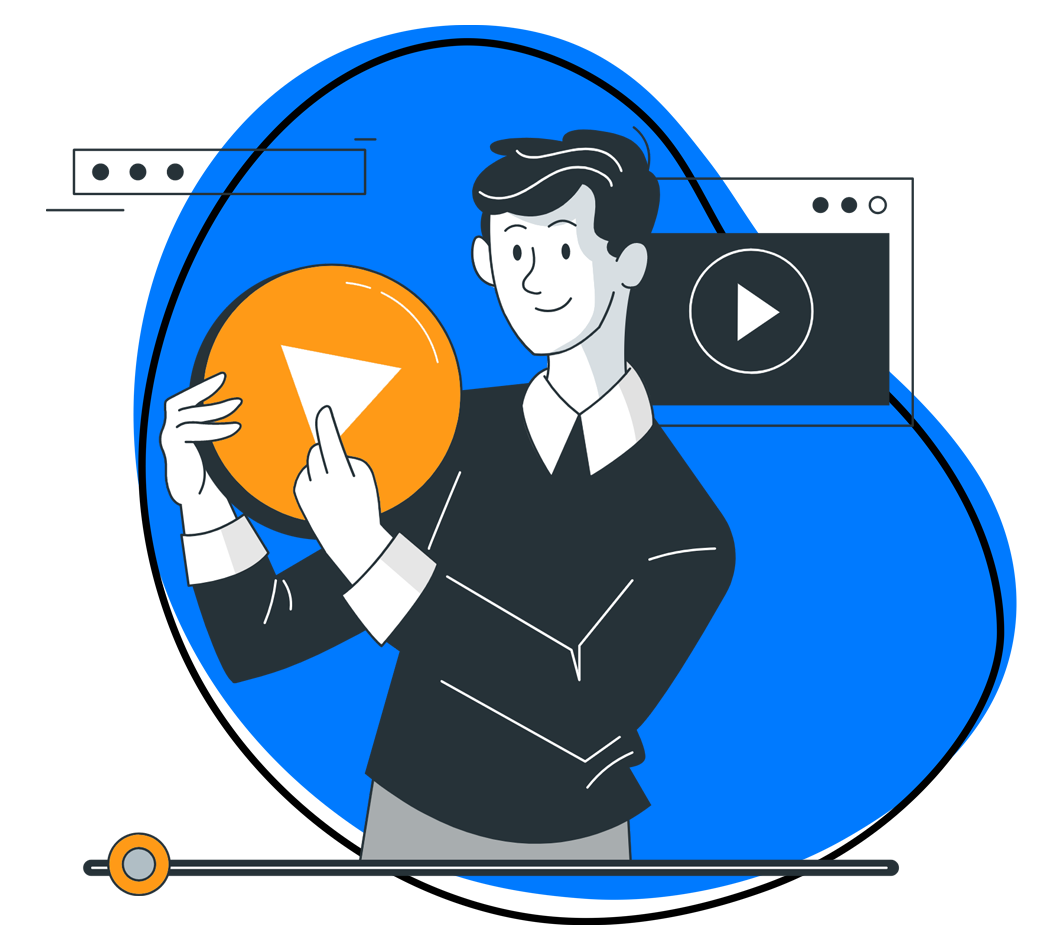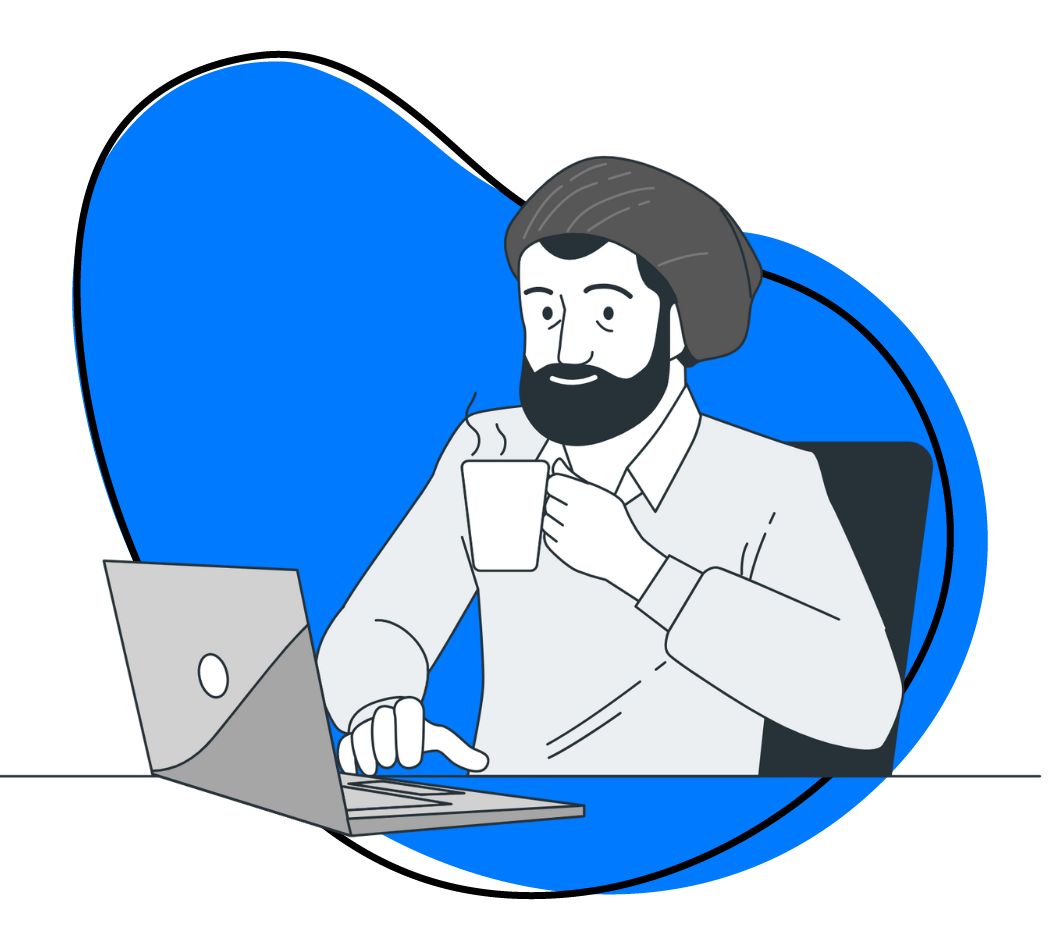Video conferencing has never been more popular. And while this form of communication has obvious benefits, it also has a dark side: Zoom fatigue.
Being able to talk with friends, family members, coworkers, and customers face-to-face—even if we’re thousands of miles away—is pretty great. But too many virtual meetings will leave you exhausted, as many professionals have learned.
Yes, that’s right—Zoom fatigue is real and not just a fleeting feeling. Prolonged video calls can leave us feeling more drained than ever as if we’ve run a virtual marathon. Staring at screens, juggling multiple tasks, and the absence of those casual water cooler chats are taking their toll.
Fortunately, we have a plan to combat this virtual exhaustion and save the day. Get ready to regain your energy, restore your focus, and be the conqueror of Zoom fatigue! In this article, we will share all you need to know about Zoom fatigue and equip you with nine powerful strategies to emerge victorious and master the art of virtual interactions. Let’s get started!

What is Zoom Fatigue?
According to Healthline, Zoom fatigue is “the exhaustion you feel after any kind of video call or conference. It’s not a formal diagnosis, but Zoom fatigue is very real.”
Have you ever clicked out of a virtual meeting with a few coworkers and felt you needed to drink a gallon of Red Bull to get through the rest of your day? Then you’ve probably experienced this fatigue in some shape or form.
Symptoms of Zoom fatigue include:
- A general feeling of exhaustion
- Letting your mind wander during meetings
- Overheating while on a video conference
- Experiencing headaches or migraines
- Feeling anxiety about video meetings
While the term references Zoom, the most popular video conferencing platform on the planet, it’s important to note that Zoom fatigue can stem from any form of live video communication.
Creating a Better Work Environment and Getting Rid of Zoom Fatigue

Here’s the deal: Zoom fatigue is real, lowering your quality of life.
It’s not Zoom’s or any other video conferencing software’s fault. These companies have built amazing tools that allow us to connect with people face-to-face—even if we’re thousands of miles apart. The problem is we’ve become so reliant on them that they’ve started to burn us out.
Fortunately, now that you know what Zoom fatigue is and how it manifests, you can implement the tips listed further in the article below to overcome it and create a better work environment for yourself!
Speaking of a better work environment, don’t forget about Zight.
Our software makes it easy to record yourself talking, capture video of your screen, create GIFs, and annotate screenshots with arrows, text boxes, and emojis. These features make communication more efficient and help guard against Zoom fatigue. Are you ready to get rid of that Zoom meeting and send a screenshot or an annotated video recording using Zight instead?
What Causes Zoom Fatigue?
So why is Zoom fatigue a thing? Jeremy Bailenson, a Stanford researcher and one of the leading authorities on Zoom fatigue, gives us three reasons:
- Performance Anxiety: When you join a video call, you can see other attendees in small boxes on your screen. You can also see yourself. This leads many people to worry about their appearance, which gives them performance anxiety.
- Sedentary Days: You don’t have to walk to a conference room to participate in a virtual meeting. You simply pull up a new screen on your computer. This causes professionals to become more sedentary, which can harm their mental states.
- Impersonal Communication: Much of human communication is non-verbal. Video conferencing makes it harder to decipher visual cues and truly understand what we’re being told. This can result in cognitive overload and extra stress.
Add these things together: constant performance anxiety, sedentary days, and the less personal nature of Zoom meetings, and it’s not hard to see why many of us are more tired.
How Do You Beat Zoom Fatigue?

Zoom fatigue is real and causes feelings of exhaustion, headaches, and other unsavory symptoms. So it makes sense to ask, “How do you fight Zoom fatigue?” Here are the tips to keep you going in the age of (seemingly) endless video conferences.
1. Turn Off Your Camera
One of the easiest ways to alleviate Zoom fatigue is to simply turn your camera off. Doing so will help reduce performance anxiety during these meetings. It will also give you more mobility, allowing you to pace around your office or even walk outside (assuming you have wireless headphones and can access the meeting via your phone.)
In most cases, you don’t need your camera on anyway. If you’re watching a presentation, the presenter doesn’t need to see you. If you’re joining a large group, most other attendees won’t care if they see you, especially if you’re not talking.
Still want to keep your camera on? Hide self-view in your video conference software’s settings. This will, at the very least, reduce your performance anxiety levels because you won’t be able to see yourself and worry if you look okay.
2. Adjust Your Schedule
Next up, adjust your schedule. If every day is full of back-to-back video chat meetings, you’ll get burned out—especially if said meetings run late, which often happens. Instead, keep these three tips in mind when scheduling your video conferences:
- Don’t Schedule Back-to-Back Meetings: If at all possible, avoid back-to-backers. Breaks between meetings will rest your mind and eyes, allowing you to get out of your chair, stretch your legs, and use the bathroom.
- Schedule All Meetings on the Same Day: While we can’t recommend back-to-back meetings, you may want to try scheduling all your weekly meetings on the same day. That way, you can experience freedom for the rest of the week.
- Don’t Overextend Your Virtual Conferences: Lastly, if you’ve scheduled a 30-minute virtual meeting, don’t push it to 45 minutes unless you have to. Run through your agenda, then bid adieu to attendees and let them get on with their lives.
Virtual meetings are almost inevitable in the modern world. But paying attention to your schedule can help avoid video chat fatigue.
3. Use Other Communication Tools
Zoom is a great tool. So are Google Hangouts, Highfive, and many other video conferencing software. But they aren’t the only ways to communicate with employees, colleagues, and prospects. Give yourself a break by reducing meetings and use something a different solution like:
- Zight: Want the convenience of asynchronous communication and the clarity video chats provide? Use Zight to create and send video messages, screen recordings, GIFs, and annotated screenshots with just a few clicks.
- The Phone: Of course, you can always just pick up the phone and call your colleagues, employees, prospects, etc., to cut back on video meetings.
- Email: Short on time and need to convey a simple message? Shoot your recipient a short email rather than schedule another Zoom call.
- Slack: Messaging apps like Slack are great for staying in touch with colleagues, sharing information, and more. They also won’t burn you out like video meetings.
You can overcome fatigue by finding the right balance between Zoom calls, written communication, and asynchronous video messages.
4. Eliminate Multitasking
Let’s be honest: multitasking is bad news. Science has proven that the human brain can’t focus 100% on more than one thing at a time—no matter how hard we try. Attempting to multitask just leads to lower productivity and brain health.
Multitasking is problematic when paired with video conferencing because effective meetings require more brain power than other tasks.
When you join a video conference, close the other tabs on your screen, put your phone away, and log out of your email. Do whatever you can to eliminate distractions to give the video meeting your full attention.
5. Designate a No Meeting, No Phone Call Day
Consider implementing a “Zoom-Free Day” within your organization after discussing the prevalent video call fatigue with your colleagues. On this designated day, the firm refrains from scheduling business-related meetings or phone calls. This allows everyone to focus on undisturbed, heads-down work, alleviating the pressure of juggling tasks amidst constant calls.
You can also opt for a reversed approach, dedicating one day where people can freely schedule a video or phone calls, catering to individual preferences and optimizing productivity. Such initiatives can combat Zoom fatigue while fostering a healthier and more productive virtual work environment.
6. Set Up a Comfortable and Ergonomic Workspace
Your work environment can significantly impact your workflow, overall well-being and contribute to Zoom meeting fatigue. Creating a comfortable and ergonomic workspace can help reduce physical strain and discomfort during video conferences. Here’s how to set up an ideal workspace:
- Ergonomic Chair and Desk: Invest in an ergonomic chair that supports your posture and promotes good back health. Pair it with an adjustable desk at a height that allows your elbows to rest comfortably at a 90-degree angle while typing and video conferencing.
- Monitor Positioning: Adjust your monitor’s height so the top of the screen is at or below eye level. This positioning helps reduce strain on your neck and eyes and encourages a more natural posture.
- Proper Lighting: Ensure your workspace is well-lit to reduce eye strain and fatigue. Avoid the glare on your computer screen by positioning it away from direct light sources and using curtains or blinds to control natural light.
- Eye Breaks: Follow the 20-20-20 rule to give your eyes periodic breaks during video conferences. Every 20 minutes, take a 20-second break to look at something 20 feet away. This practice helps relax your eye muscles and prevents digital eye strain.
7. Engage in Mindfulness and Deep Breathing Techniques

During lengthy Zoom meetings or back-to-back virtual conferences, stress can build up, leading to higher fatigue levels. Practicing mindfulness and deep breathing techniques can help you stay present and reduce Zoom fatigue. Here’s how to incorporate these practices:
- Mindfulness: Practice being fully present during video conferences. Pay attention to the discussion, actively listen to participants, and resist the temptation to multitask or get distracted by other browser windows.
- Deep Breathing: Introduce a few moments of deep breathing during the meeting or in between sessions. Take a few slow but deep breaths to relax your body and clear your mind. Deep breathing helps reduce stress and promotes focus.
- Virtual Meditation Sessions: Consider scheduling short meditation sessions before or after a full day of video meetings. Apps and websites offer guided meditation sessions tailored to workplace stress and mental fatigue.
8. Incorporate Movement and Stretching
Sitting in front of computer screens for long periods can lead to physical stiffness and discomfort. Incorporating movement and stretching into your day can combat Zoom fatigue and improve overall well-being. Here are some ideas to stay active during virtual workdays:
- Micro-Break Exercises: During short breaks between meetings, perform quick exercises like stretching your arms and shoulders, rotating your neck gently, or doing leg lifts while seated.
- Stand-Up Meetings: Consider turning some video conferences into stand-up meetings when appropriate. Standing helps maintain better posture and keeps you more alert and engaged during the meeting.
- Walk and Talk: Take phone calls or one-on-one meetings outdoors and walk while talking. This provides a change of scenery and adds light physical activity to your day.
9. Foster Social Connections and Build Relationships
Zoom fatigue can be heightened by feeling disconnected from colleagues and lacking face-to-face interactions. Building and maintaining social connections within a remote work environment can help combat feelings of isolation and fatigue. Here’s how to foster social connections:
- Virtual Water Cooler Moments: Set aside time for informal virtual gatherings where team members can chat and socialize without a strict agenda. This mimics the casual conversations that would naturally occur in an office for in-person meetings.
- Celebrate Milestones and Achievements: Acknowledge and celebrate accomplishments within the team during Zoom meetings. Recognizing and appreciating each other’s efforts boosts morale and strengthens team cohesion.
- Virtual Team-Building Activities: Organize online team-building activities or games to promote collaboration, teamwork, and camaraderie among team members. These activities can inject some fun and reduce the monotony of video conferences.

How to Recognize That Your Team Has Zoom Fatigue
Recognizing that your team is experiencing fatigue is crucial for addressing and finding effective ways to combat the issue. Here are some signs to look out for:
- Decreased Active Participation: If team members show a decline in active participation during video calls or Zoom meetings, such as minimal engagement, fewer questions, or lack of contribution, it could be a sign.
- Shortened Attention Spans: When team members exhibit shorter attention spans during meetings, struggling to stay focused or easily getting distracted, they might be experiencing cognitive load and Zoom exhaustion.
- Reduced Enthusiasm and Energy: If team members seem less enthusiastic or energetic during video calls, it might indicate motivational fatigue caused by an overload of virtual interactions.
- Increased Reliance on Multitasking: When team members frequently multitask during video meetings, like checking emails or browsing the web, they might try coping with fatigue by seeking other distractions.
- Lack of Camera Engagement: Team members avoiding or hesitating to turn on their cameras during video calls could signify self-view anxiety or discomfort, a common symptom of video meeting fatigue.
- Minimal Use of Video Chats: Team members resorting to audio calls or preferring messaging platforms over video chats might seek ways to reduce the psychological consequences of continuous virtual interactions.
- Frequent Need for Breaks: If team members frequently request breaks between back-to-back Zoom meetings or express a desire for more mini-breaks during long calls, it indicates a need for relief from the intensity of video conferencing.
- Physical and Emotional Exhaustion: Team members expressing physical and emotional exhaustion after video calls or experiencing a “burned out” sensation could be a clear sign.
- A decline in Creativity and Collaboration: A noticeable decline in creativity and collaboration during meetings could be attributed to fatigue, hindering team productivity and innovation.
- Decreased Interest in Socializing: Team members showing reduced interest in virtual socializing, team-building activities, or informal interactions via video calls may be trying to balance the social fatigue from continuous virtual interactions.
Frequently Asked Questions on How to Beat Zoom Fatigue
1. Why do I get so tired on Zoom?
Feeling tired on Zoom, known as “Zoom fatigue,” is common due to prolonged virtual meetings and video calls. Several factors contribute to this fatigue, including the cognitive load required to process nonverbal cues and maintain focus during video conferencing. Additionally, staring at a screen for an extended period can strain eye muscles, leading to eye fatigue.
2. How do you survive a long Zoom meeting?
Surviving a long meeting and combatting fatigue requires implementing various strategies to stay engaged and maintain productivity. Here’s a unique set of tips to help you endure and make the most of lengthy meetings:
- Create a comfortable and distraction-free workspace and ensure proper lighting to reduce eye strain
- Plan for short breaks during the meeting to rest your eyes and give your brain a moment to recharge
- Leave gaps between meetings to decompress and mentally transition from one topic to another
- Opt for the “speaker view” rather than “gallery view” to focus on the current speaker to reduce cognitive load by minimizing distractions from other participants.
- Participate actively in discussions to stay engaged and focused
- Break down the meeting into smaller tasks if it involves lengthy discussions or projects to reduce the feeling of overwhelm
- If appropriate, encourage participants to take brief video breaks during longer meetings to allow everyone to rest their eyes and take a moment off-screen
- Stay hydrated since dehydration can contribute to fatigue, so drinking water can help maintain energy levels.
- When practicable, set time limits to avoid unnecessarily lengthy discussions to keep the meeting focused and prevented Zoom exhaustion
3. What is the 40-minute rule on Zoom?
The 40-minute rule on Zoom refers to the time limit imposed on free Zoom accounts for group meetings with three or more participants. Meetings on free accounts automatically end after 40 minutes, requiring participants to start a new meeting if they wish to continue. This rule is in place to encourage users to consider upgrading to a paid plan for longer meeting durations.
To manage the 40-minute limit, you can schedule shorter meetings or take advantage of breaks between successive meetings to create new Zoom sessions, ensuring a seamless continuation of discussions.
4. How do you manage Zoom anxiety?
Navigating Zoom anxiety requires a personalized approach to reduce fatigue and create a more comfortable virtual meeting environment. Here’s a set of unique strategies you can implement to help you manage Zoom anxiety effectively:
- Surround your personal space with calming elements like plants, scented candles, or soft lighting to promote a sense of tranquility during Zoom meetings.
- Explore creative and imaginative virtual backgrounds that transport you to your favorite places or dream destinations to ease anxiety and spark conversation during the meeting.
- Before joining the Zoom meeting, strike a power pose for a few seconds. Research shows that power poses can boost confidence and reduce stress, helping you feel more at ease during virtual interaction.
- Visualize successful and positive outcomes for the Zoom meeting to reinforce a positive mindset.
- Incorporate a short pre-meeting meditation session to center yourself before the video chat.
- Develop a virtual persona or alter ego that embodies confidence and fearlessness, allowing you to shed inhibitions and confidently embrace the virtual space.
- Acknowledge and celebrate small wins during the meeting to boost self-assurance and combat Zoom anxiety.
- Keep a doodle pad or digital drawing tool handy during the Zoom meeting to promote focus and ease anxiety during the video chats.
- Dress in attire that makes you feel fantastic to boost your self-esteem and help you find video calls positive
- Establish a post-meeting ritual to wind down and transition from Zoom mode to decompress after the virtual interaction.












